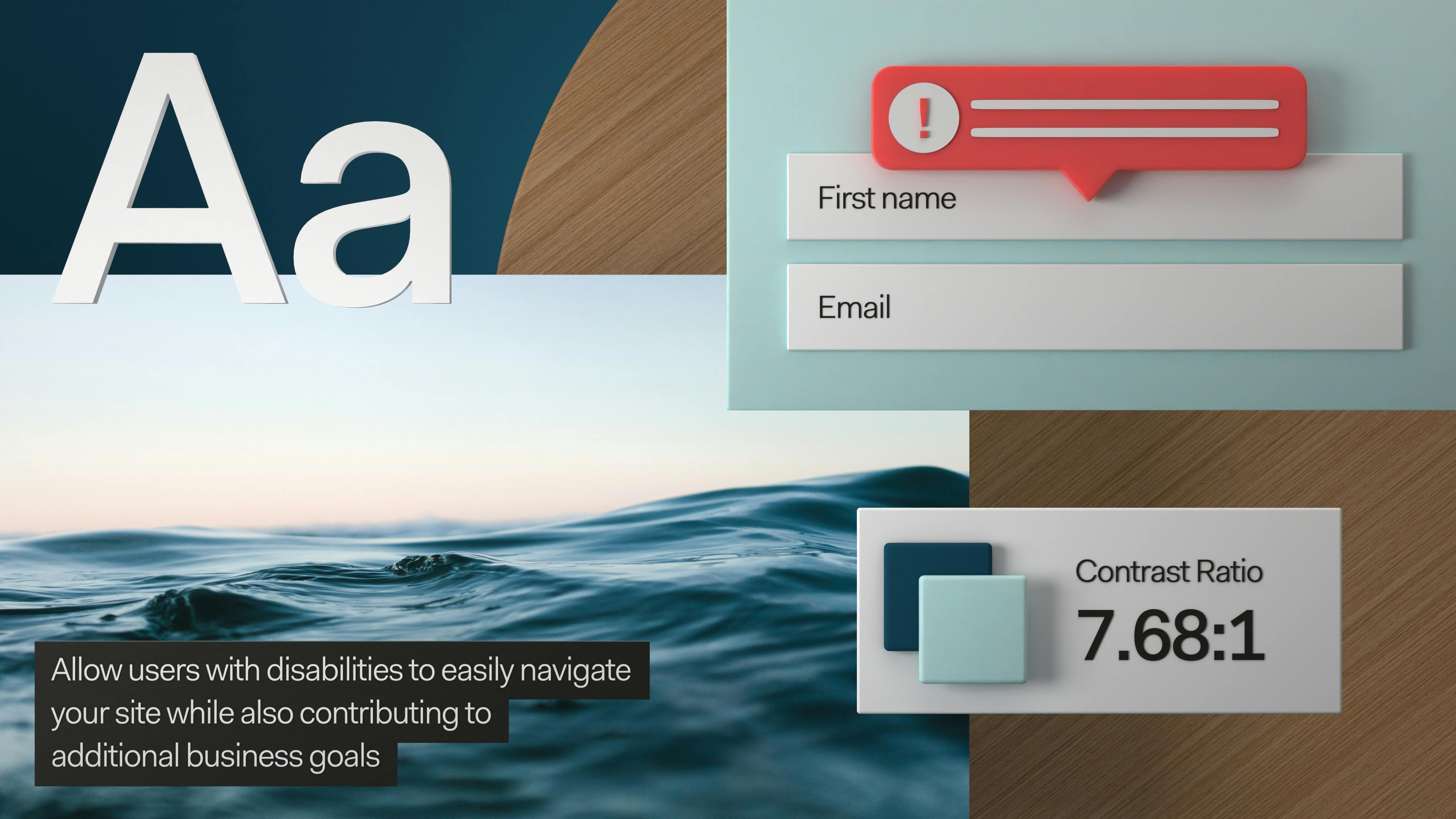Accessibility
Keeping accessibility and ADA compliance top of mind from the start of any website project allows our clients to reach all kinds of users, increase SEO, and comply with legal requirements.

What does accessibility mean?
Web accessibility means that websites, tools, and technologies are designed and developed so that people with disabilities can use them with ease. When websites and web tools are properly designed and coded with accessibility in mind, people with disabilities are able to perceive, understand, navigate, and interact with them.
What does it mean for your business?
Benefits beyond user accessibility.
Websites designed and developed for accessibility allow users with disabilities to easily navigate your site while also contributing to additional business goals. Accessibility features often solve unanticipated problems before they arise, express to your users that you care about inclusion and diversity, extend your market reach, and minimize your legal compliance risk.
Set up for SEO success.
Web accessibility standards require clear navigation, alt text for images, transcripts/closed captions for video and audio content, descriptive anchor texts for hyperlinks, and content to be organized in a hierarchy using heading tags. These tactics align with what major search engines have also recommended to improve the on-page aspect of SEO.
Clean, clear web design from the start.
Designing and developing for accessibility means that the site will be built with ease of use and user flow in mind from the start. This results in a website that is highly navigable, readable, adaptable, and operable for all users.
According to the Web Accessibility Initiative, the global market of people with disabilities is over 1 billion people with a spending power of more than $6 trillion. Accessibility often improves the online experience for all users.
Is accessibility right for you?
If you have a web presence, yes.
Every type of business should strive for accessibility compliance on their web properties to meet legal requirements. Additionally, businesses that use their website to convert users into customers and/or whose website content is a resource or educational should make accessible design and development a priority.
Bukwild partners with a quality assurance vendor, Foxhole QA, who conducts accessibility audits on all of the sites that we build. WCAG 2.1 guidelines are used to assess acceptance criteria for accessibility conformance of the project. Foxhole QA produces a list of priority issues that need to be addressed and then Bukwild meticulously attends to each ticket.
Additionally, Bukwild's UX and design teams’ expertise in this area allows the creative aesthetic to not be compromised in order to comply with accessibility standards.
With the ever changing nature of content on a living site, ADA compliance for the web is a continual, ongoing process. Bukwild offers support and optimization retainers that account for continued compliance support so that your site can not only launch with compliance but also remain in compliance moving forward.
All teams at Bukwild play a role in making sure each site we create is accessible and ADA compliant. User experience and design teams ensure that every building block is created with accessibility in mind, like color contrast and font size, to minimize compliance speedbumps closer to launch; content and copywriting teams account for image alt text, captions, transcripts, etc; developers are responsible for coding the site in alignment with compliance best practices; and project managers facilitate communication and workflows between our QA partners and internal teams.
Featured Clients
We take an accessible approach to all of our website projects. Bukwild has helped clients who come to us with pending lawsuits in dire need of updating their site to conform to ADA standards as well as successfully redesigning and developing sites for clients that have prioritized accessibility, reaching WCAG 2.1 AA standards.